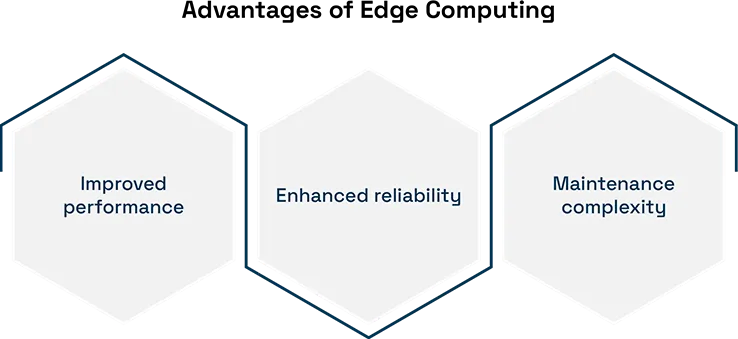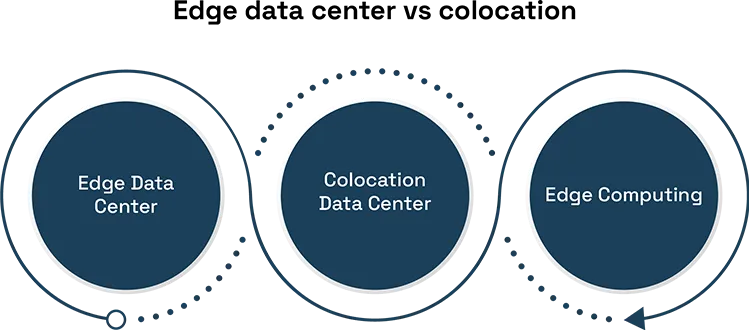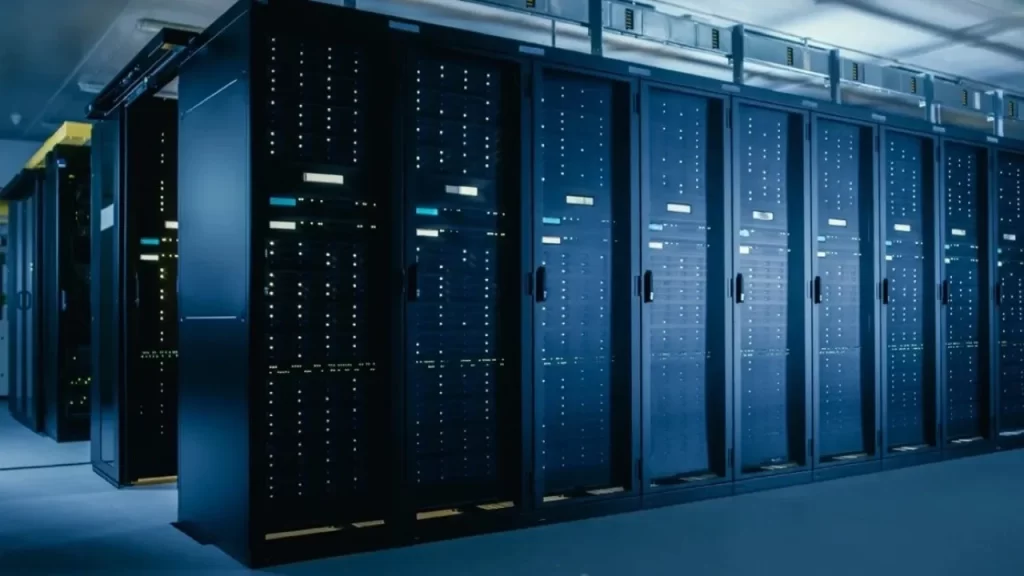An edge data center is a way to process data closer to the users and devices. This Helps reduce delays and makes apps faster. A colocation data center, on the other hand, is a shared colocation facility where multiple startup businesses can house their multiple servers in one enormous, common location. It is possible to save cost with this setup since it involves sharing of resources.
In 2025, the amount created will increase a lot, increasing the needs for fast and reliable processing. This where combining edge data centers with colocation comes in. Known as edge colocation, it mixes the benefits of both edge computing and data center in cloud computing to offer better service, lower delays, and more flexibility for users.
What Is Edge Computing and Its Underlying Concept
Edge computing means storing and processing data close to where it was first generated by the network. Instead of sending everything to big, central data centers, edge computing uses many smaller local servers or devices. This creates faster and more efficient networks by handling data nearby.
This approach offers many benefits, such as faster response times, lower use of internet bandwidth, and better security. Because data is processed on-site, edge computing is reliable and perfect for real-time and on-demand applications. It also supports important data center solutions, improves cloud networking understanding of cloud-based center networks, and helps with data center optimization techniques for better performance.
Advantages of Edge Computing
Edge computing has many benefits that make it useful today. It reduces delays by processing data close to where it’s created instead of sending it to a faraway data center. This is important for things that need quick responses, like self-driving cars or virtual reality. It also improves how well the system works by handling tasks locally, which makes apps faster and smoother. By filtering data at the edge, it uses less internet bandwidth, saving costs and reducing network traffic.
Another big advantage is reliability. Edge computing does not depend only on big data centers, so it keeps working even if the connection to the main center fails. This is very important for critical applications that must always stay online. Plus, it is easy to scale and adapt as needs grow or change. Using good data center infrastructure management, companies can manage and grow their edge system without huge changes to their setup. Overall, edge computing helps make data use faster, cheaper, and more flexible.

What Is Colocation and Colocation Data Centers
Many benefits of colocation help out different types of businesses. It saves space and money. It doesn’t matter if you are a large company or a small startup; extra space doesn’t come cheap. With colocation, you occupy space, get power, cooling and security and you spend more on that instead of running your own data center.
The ease of scaling with your business is one more reason to start with Colocation. You can expand your rental area and add more tools when your business demands more space and tools. And, data centers have employees with proper training to take care of your hardware and ensure that everything works fine. Better security, with guards and thorough experts to keep your data and thwart cyber threats. These benefits make colocation a popular, safe and cost-effective option for hosting data and applications.
Advantages of Colocation
Colocation offers many benefits that help different kinds of businesses. One big advantage is saving space and money. Whether you’re a small startup or a large company, having extra space costs a lot. Colocation gives you space, power, cooling, and security, so you spend less on running your data center.
With your business, it’s easy to grow with colocation. If you need more space or more equipment, you can rent some more. On the plus side, data centers have knowledgeable people who will run your hardware and ensure that everything works properly. It is secure too and well protected with the help of guards and experts to secure your data and prevent cyber attacks and threats. These benefits are the reason why colocation is a safe, popular, and cost-effective option for hosting data and applications.
Edge Data Center vs Colocation: Key Differences
Edge computing is based on smaller, distributed edge data centers near the customer. This setup helps process data quickly and supports real-time applications. Edge data centers are flexible and can grow with your business by adding resources as needed. Besides, edge computing can be expensive because it requires special hardware and software to work efficiently near the user.
On the other hand, colocation uses large, centralized data centers where many businesses share space and resources. These data centers are usually far from users but offer powerful hardware and easier maintenance. Colocation is cheaper since costs are shared among users, and it works best for applications needing large data storage and high availability rather than real-time processing. Both edge data centers and colocation provide scalable and flexible options depending on your needs.

Did You Know?
Global investment in an amount in edge data centers is expected to grow more than 30% annually through 2025 to facilitate faster data processing near users. However, this growth is also indicative of the growing significance of pairing edge data centers with colocation facilities to eliminate delays and provide improved performance. The hybrid approach of combining the best of both cloud and on-premises uses enables these companies to save costs and benefit from increased scalability to deal with real-time applications and large amounts of data storage.








